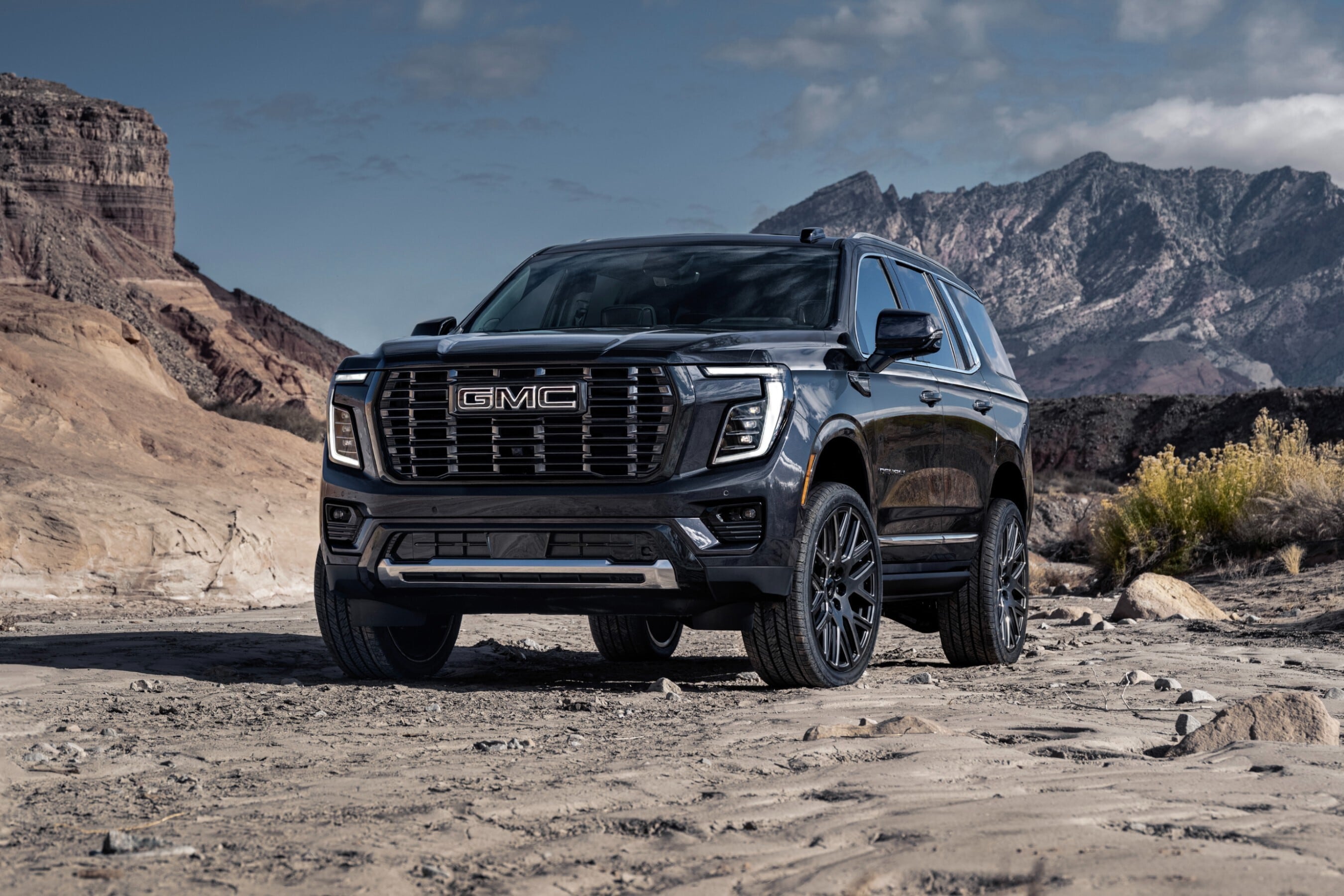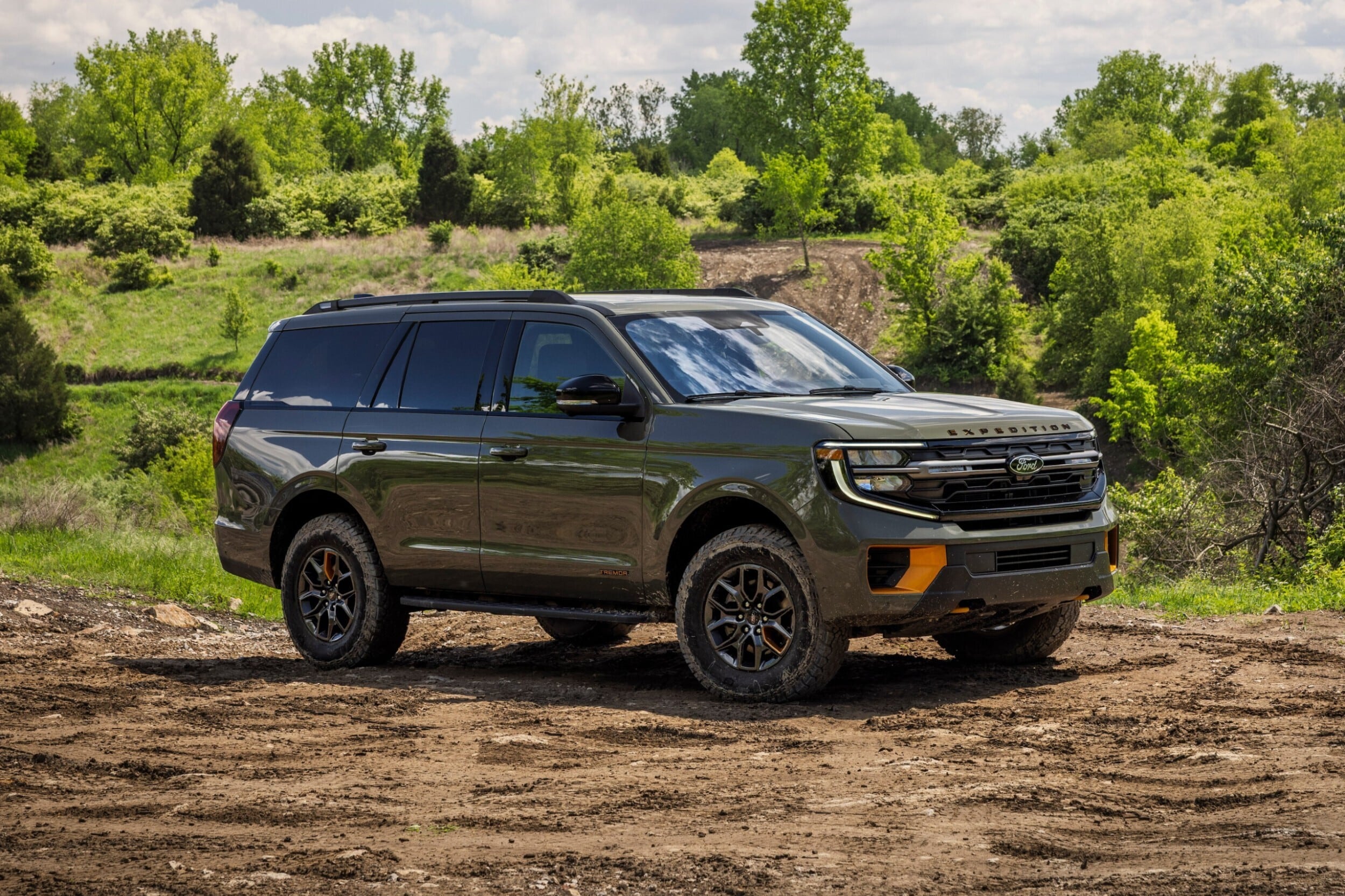Let’s say you need a vehicle with room for more than five passengers, a large cargo area, and the ability to pull a heavy trailer. A full-size three-row SUV should work well, but which one? The most significant news this year is the redesigned Ford Expedition. Ford has given its biggest SUV a complete makeover with a more upscale interior, new technology features and a novel split-opening tailgate.
It’s a compelling pick for a big SUV, but it’s not the only one vying for your attention. The GMC Yukon got its own refresh for 2025. It’s not as comprehensive as the Expedition’s, but it too features a significant interior and technology overhaul that further distances it from its mechanical twin, the Chevy Tahoe. Edmunds’ auto experts tested both to determine which one is the better buy.
Power and fuel economy
The Expedition has a turbocharged 3.5-liter V6 in two versions. The standard-output V6 produces 400 horsepower and 480 lb-ft of torque, while the high-output version pumps out 440 horsepower and 510 lb-ft. EPA-estimated fuel economy is 19 mpg combined with standard rear-wheel drive and 18 mpg combined with optional four-wheel drive.
The Yukon’s engine choices are an interesting contrast. The standard 5.3-liter V8 produces 355 horsepower and 383 lb-ft, while the 6.2-liter V8 standard on top trim levels has a more competitive 420 horsepower and 460 lb-ft. Fuel economy is up to 17 mpg combined for the 5.3-liter V8; the 6.2-liter gets 16 mpg combined.
At the Edmunds test track, an Expedition with the high-output V6 accelerated from zero to 60 mph in 5.5 seconds. That’s a second quicker than the Yukon with its bigger V8. The Yukon does have an efficiency ace up its sleeve, however. You can get an optional turbodiesel six-cylinder that makes 305 horsepower and 495 lb-ft and gets up to an EPA-estimated 23 mpg combined.
Advantage: Tie
Space and towing
Third-row space is exceptional in both, especially for tall teens or adults. On paper, though, the Expedition has a slight advantage with its 36.5 inches of third-row legroom compared to the Yukon’s 34.9 inches.
Their respective specs also indicate the Yukon has more cargo space. However, in Edmunds’ testing, Ford’s full-size SUV could hold more pieces of luggage behind its third row seat. Specifically, the cargo area is wider back there.
For really big gear hauling, the Expedition can tow a maximum of 9,600 pounds. The Yukon maxes out at 8,400 pounds.
Advantage: Ford Expedition
Comfort
Both of these SUVs are well-suited for big families. There are subtle differences, however. The Expedition’s greatest strength is undoubtedly space. There’s ample room for passengers in every seat, and the seats are comfortable, especially for the driver and front passenger. We like them better than the Yukon’s front seats for comfort on long drives. We’ve also found that the Expedition has less wind and road noise on the highway than the Yukon.
Most SUVs based on trucks are subject to undue vibrations and reverberations throughout the cabin, but the Expedition keeps those to a minimum. It also has a smooth ride over bumps and ruts. The Yukon offers an optional adaptive air suspension that can adjust the SUV’s ride height and automatically soften the shock absorbers to help smooth out the ride even further, but overall we’ve found the Expedition more relaxing and comfortable to drive.
Advantage: Ford Expedition
Technology
The GMC Yukon has a distinctive 16.8-inch portrait-oriented touchscreen that features a Google-based operating system. The Google integration provides the familiarity of Google Maps and other Google features, such as the voice-based Assistant app. There is an 11-inch digital instrument panel as well with customizable layouts and information. This is a very good tech package that Edmunds rates highly for its functionality and feature content.
That said, we rate the Expedition’s system even higher. It consists of a 13.2-inch touchscreen interface that works in concert with an enormous 24-inch ultra-wide dash-top screen that acts as a combination instrument panel and customizable secondary display for the touchscreen. These screens are bright and easy to read and don’t feel like tech for tech’s sake — they actually improve functionality.
Both SUVs offer hands-free highway driving assist technology: GMC’s is called Super Cruise and Ford’s is called BlueCruise. Both are effective and reliable, and if either enjoys the slightest advantage, it’s the GMC thanks to its light-up steering wheel that makes it perfectly obvious when the system is operating or needs your attention.
Advantage: Ford Expedition
Edmunds says
While the Yukon is luxurious, comfortable and packed with impressive technology features, the Ford Expedition quite simply outdoes it in most respects. It also boasts multiple high-end trim levels that easily hold their own against the top trims of the Yukon for luxury appeal.
_____
This story was provided to The Associated Press by the automotive website Edmunds. James Riswick is a contributor at Edmunds.
Copyright 2025 The Associated Press. All rights reserved. This material may not be published, broadcast, rewritten or redistributed without permission.

